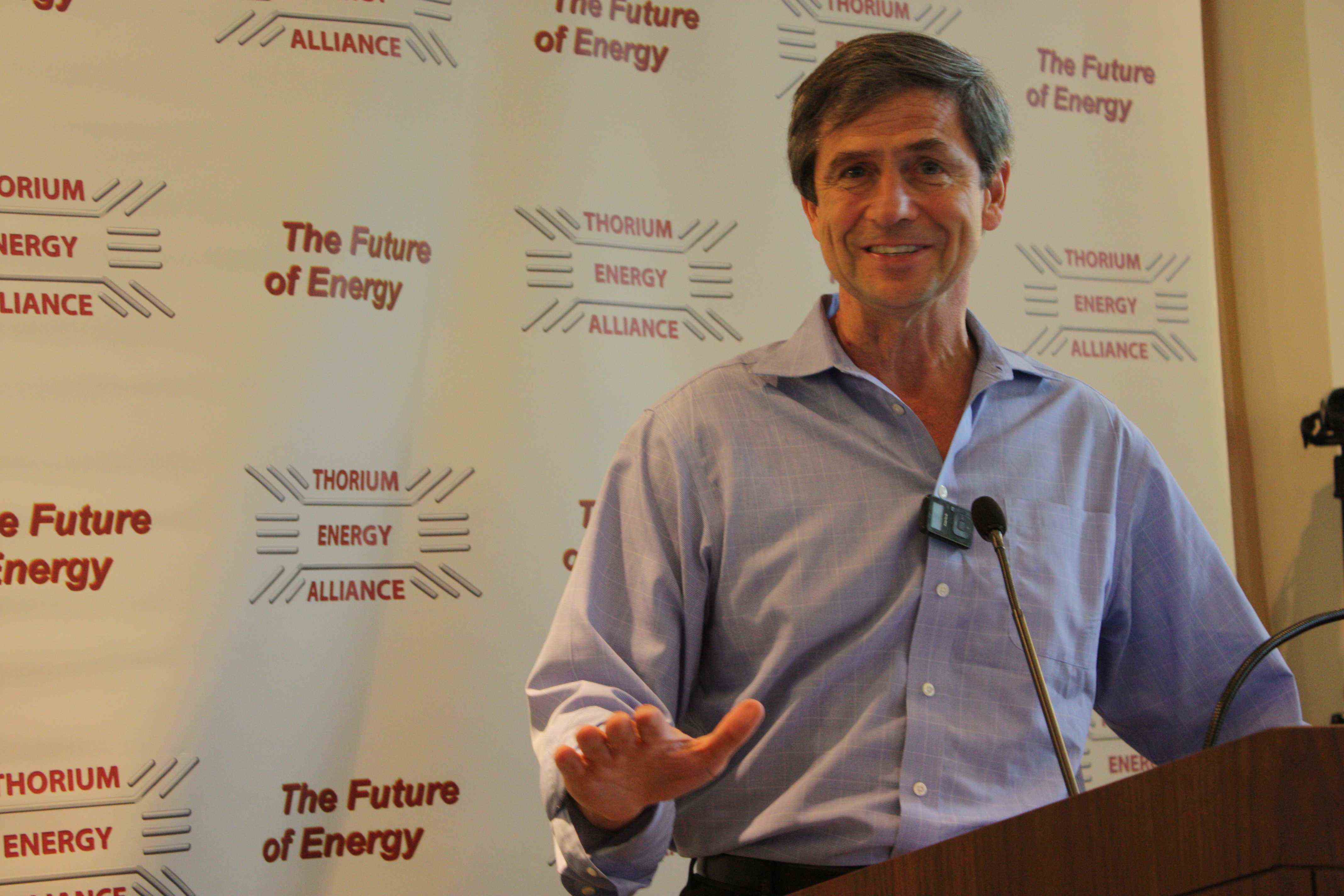Senatorial candidate turns up thorium nuclear heat for U.S. economy


CHICAGO - Small nuclear reactors based on entirely different designs from today's nuclear technology could help the U.S. secure a clean and independent energy and economic future, a former two-term congressman, Navy admiral and senatorial candidate said here.
Reactors that use liquid thorium fuel - rather than today's solid uranium - would be valuable sources of clean industrial heat as well as generating electricity, Pennsylvania Democrat Joe Sestak told the Thorium Energy Alliance Conference earlier this month.
Liquid thorium reactors - also known as thorium molten salt reactors - operate at much higher temperatures than conventional reactors. They could provide CO2-free heat for the high-temperature industrial processes fed today by CO2-emitting fossil fuel furnaces, Sestak said.
Those processes would include operations within the fossil fuel industry such as extraction and turning coal and natural gas into liquid form. The natural gas fracking industry, big in Sestak's home state, could be among the users.
Thorium molten salt reactors (TMSRs) provide a number of advantages over conventional nuclear. In addition to their potential as heat sources, they are safer, yield less long-lived waste, are more efficient and more resistant to weapons proliferation.
The U.S. developed a TMSR at Oak Ridge National Laboratory in the 1960s. China is now developing them, in part with technology from Oak Ridge. A number of Western companies are attempting to revive the reactor type, using either liquid thorium or uranium (see links below for longer list), but face signifiant funding hurdles. Sestak encouraged TMSR developers - who often promote their technology for its CO2-free aspect - to team with the "strange bedfellows" of the fossil fuel industry which has money but carries a CO2 stigma.
“You have got to get allies on board,” Sestak told a crowd of thorium enthusiasts including scientists, engineers and businesspeople. “The best ones are unlikely bedfellows.”
Sestak noted that a thorium energy base could also help the U.S. regain control from China of vital rare earth metals. Rare earths occur in the same common minerals as thorium (despite their name, rare earth elements are not rare, yet China has managed to command over 90 percent of the world market).
Mining those minerals, such as monazite, would thus yield an energy source as well as the metals that are crucial across a wide range of products including missiles, radar, cars, magnets, lightbulbs, computers and smartphones. Rare earths are also key to renewable energy technologies like wind turbines and solar panels.
"I believe that thorium with rare earths is a way to enhance - greatly - the accessibility of our energy in so many fields, not just nuclear power," Sestak said.
Sestak, who narrowly lost a bold bid for Senate in 2010, is considering another run in 2016. As a retired admiral who commanded a nuclear powered aircraft carrier in the Persian Gulf, Sestak trusts nuclear safety. For more on him and on his Chicago presentation, see my Weinberg blog.
Photo of Joe Sestak at Thorium Energy Alliance Conference by Mark Halper.
More thorium reactors, on SmartPlanet:
- It's show time for nuclear!
- Thorium reactors could soon power Indonesia, Chile
- Alternative nuclear energy race heats up as Canadian company enters
- How thorium can burn nuclear waste and generate energy
- Turning Japan’s nuclear past into its future
- And the DOE energy innovation award goes to … a new type of nuclear power
- Norway ringing in thorium New Year with Westinghouse at the party
- Son of China’s ex-president: Thorium will help shape country’s energy future
- The new face of safe nuclear
The thorium-rare earth connection:
- Solve the energy AND rare earth crisis: Join the Thorium Bank
- How to manage the dirty side of thorium and assure its global supply, with rare earths
Another touch of nuclear heat:
This post was originally published on Smartplanet.com